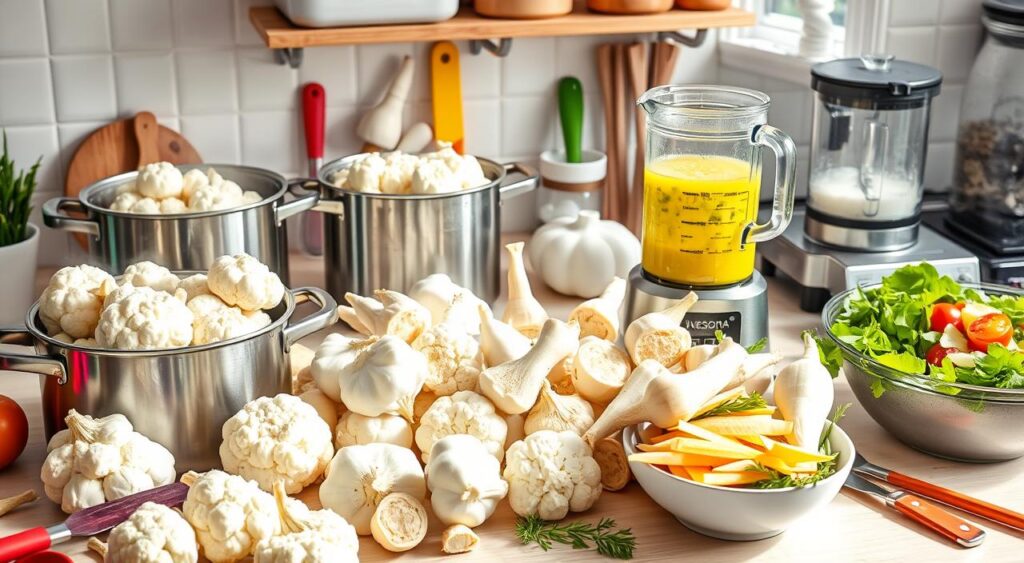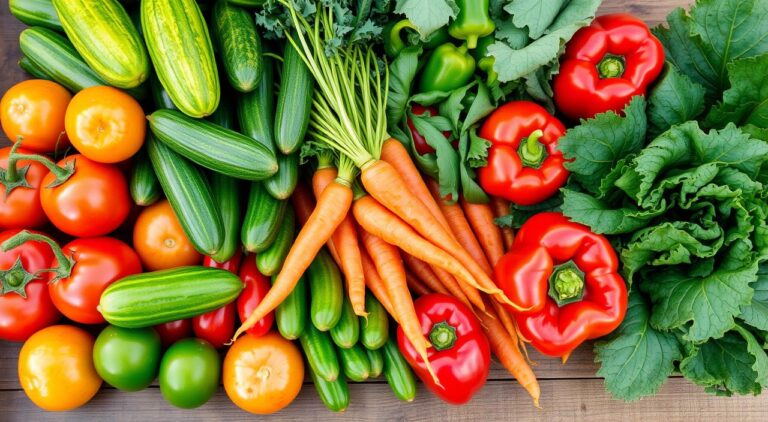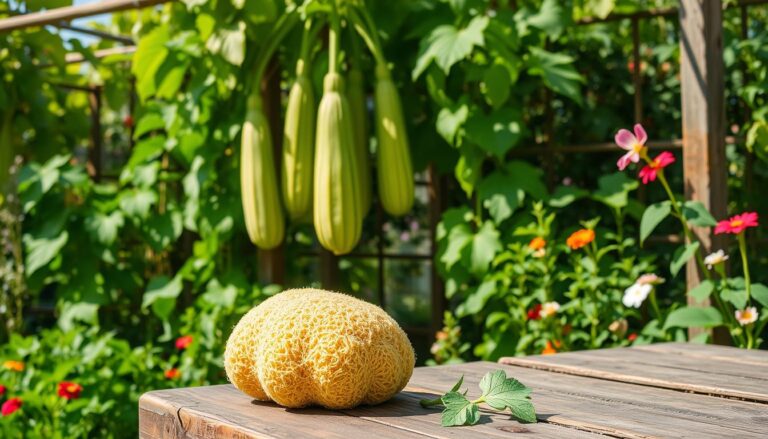Most Nutritious White Vegetables to Add to Your Meals
Most Nutritious White Vegetables to Add to Your Meals
White vegetables might not be as flashy as their colorful friends, but they’re full of good stuff. They’re loaded with nutrients that can really help your health. Let’s dive into the world of white veggies, their nutritional perks, and how to make them a part of your daily meals.
Key Takeaways
- White vegetables are often underestimated, but they are packed with essential vitamins, minerals, and other beneficial compounds.
- These vegetables can provide a range of health benefits, from supporting immune function to promoting heart health.
- Incorporating a variety of white vegetables into your meals can add depth and diversity to your diet.
- Proper preparation and storage techniques can help preserve the nutrients in white vegetables.
- Both root-based and above-ground white vegetables offer unique flavors and textures to explore.
Understanding the Nutritional Power of White Vegetables
Many think colorful veggies are the healthiest. But white veggies are packed with nutrients too. Let’s explore the benefits of adding cauliflower, potatoes, and onions to our meals.
Nutrients in White Vegetables
White veggies may not be as colorful, but they’re full of good stuff. They’re rich in fiber, potassium, and vitamins like C and K. Cauliflower is a folate superstar, and potatoes are loaded with vitamin B6 and manganese.
Health Benefits of White Vegetables
Eating white veggies can boost your health. They’re high in fiber for a healthy gut. Potatoes and onions help your heart with their potassium. Plus, cauliflower’s sulforaphane might fight cancer.
“Contrary to popular belief, white vegetables are not nutritionally inferior to their colorful counterparts. In fact, they can be just as, if not more, beneficial for our overall health.”
So, don’t skip white veggies in your meals. They’re a treasure trove of nutrients and health perks.
Most Popular White Vegetables and Their Benefits
White vegetables are full of nutrition. From potatoes to parsnips, they offer many health benefits. These benefits are often overlooked compared to colorful vegetables. Let’s explore the amazing qualities of these white vegetables and why they’re great for your diet.
Potatoes: A Nutrient-Dense Staple
Potatoes are a key part of a healthy diet. They’re rich in vitamin C, potassium, and vitamin B6. They also have antioxidants and fiber, making them a great addition to any meal.
Onions: The Aromatic Superfood
Onions are more than just aromatic. They’re packed with vitamin C, vitamin B6, and manganese. They also contain sulfur compounds that help fight inflammation and improve heart health.
Turnips and Parsnips: The Unsung Heroes
Turnips and parsnips are often overlooked but are true heroes. Turnips are full of vitamin C, fiber, and potassium. Parsnips have vitamin C, folate, and manganese. Both add unique flavors and textures to dishes.
| Vegetable | Key Nutrients | Health Benefits |
|---|---|---|
| Potatoes | Vitamin C, Potassium, Vitamin B6 | Antioxidant protection, Improved heart health, Balanced blood sugar levels |
| Onions | Vitamin C, Vitamin B6, Manganese | Reduced inflammation, Improved heart health, Boosted immune function |
| Turnips | Vitamin C, Fiber, Potassium | Improved digestion, Reduced blood pressure, Cancer-fighting properties |
| Parsnips | Vitamin C, Folate, Manganese | Improved bone health, Enhanced cognitive function, Reduced risk of chronic disease |
Adding white vegetables to your meals can bring many benefits. They add flavor and nutrition to your dishes. Try mashed potatoes or roasted parsnip fries for a tasty twist.
Cooking Methods to Preserve Nutrients in White Vegetables
Choosing the right cooking method is key to keeping white vegetables nutritious. Steaming, roasting, and raw preparation are top choices. Each method affects nutrient retention differently. Let’s look at the best ways to cook white vegetables and keep them fresh and healthy.
Steaming and Roasting Techniques
Steaming is great for keeping nutrients in white vegetables. It uses steam to cook without water loss. This means more vitamins and minerals stay in the veggies. Steamed cauliflower and turnips, for example, keep more of their nutrients than boiled or sautéed ones.
Roasting is also excellent for preserving nutrients. Oven heat caramelizes the veggies’ sugars, boosting flavor and locking in vitamins. Roasted parsnips and kohlrabi are crispy on the outside and tender inside, full of nutrients.
Raw Preparation Methods
Raw white vegetables are a great choice for maximum nutrients. Slicing, shredding, or spiralizing them keeps their crunch and nutrients. Add them to salads, use as crudités, or spice up your dishes.
Storage Tips for Maximum Freshness
Proper storage is vital for keeping white vegetables fresh and nutritious. Store them in the fridge in a plastic bag or airtight container. This prevents moisture loss and keeps them crisp. Eat them quickly, as their nutritional value decreases over time. Choose firm, unblemished, and vibrant white vegetables.

By using these cooking and storage tips, you can enjoy the full nutritional benefits of white vegetables. They’re easy to add to your meals.
Root-Based White Vegetables: From Parsnips to Turnips
Root-based white vegetables like parsnips, turnips, radishes, and jicama are worth exploring. They bring a unique mix of flavors and textures. Plus, they’re packed with nutrients, just like their colorful friends.
Parsnips taste sweet and nutty, great for roasting or adding to soups. Turnips have a peppery flavor, perfect for winter dishes. Radishes and jicama are crunchy and mild, perfect for salads or snacks.
These veggies are full of vitamins, minerals, and fiber. Parsnips are rich in vitamin C and potassium. Turnips are high in vitamin K and antioxidants. Radishes are full of vitamin C and fight inflammation. Jicama supports gut health with its prebiotic fiber.
| Vegetable | Key Nutrients | Health Benefits |
|---|---|---|
| Parsnips | Vitamin C, folate, potassium | Supports immune function, cardiovascular health, and muscle function |
| Turnips | Vitamin K, antioxidants | Promotes bone health, reduces inflammation |
| Radishes | Vitamin C, anti-inflammatory compounds | Boosts immunity, reduces inflammation |
| Jicama | Prebiotic fiber | Supports gut health and digestion |
To keep their nutrients, cook these veggies gently by steaming or roasting. Raw preparation, like in salads or as snacks, also works well. Root-based white vegetables add variety and health benefits to any diet.

Above-Ground White Vegetables: Cauliflower and Kohlrabi
Discover the amazing world of above-ground white vegetables. Cauliflower and kohlrabi are at the top. They are packed with nutrients and offer many ways to cook and eat them. They are good for your health and taste great.
Growing and Harvesting Tips
To grow cauliflower and kohlrabi, you need patience and care. They love cool weather and well-drained, rich soil. Make sure to space them right, water them regularly, and pick them at the right time. This way, you’ll get to enjoy their fresh taste and beautiful white color.
Seasonal Availability Guide
Cauliflower and kohlrabi are best from late fall to early spring. They’re perfect for warm winter meals and soups. Thanks to new farming methods, you might find them all year. This means you can enjoy their special flavors and textures whenever you want.
Selection Guidelines
When picking cauliflower and kohlrabi, look for firm, heavy ones. They should have tight, white florets or bulbs. Stay away from any brown spots or wilted areas. Buying local and storing them right will keep them fresh and tasty.
FAQ
What are the most nutritious white vegetables?
The top white vegetables include cauliflower, potatoes, onions, and turnips. Parsnips, kohlrabi, radishes, jicama, and fennel are also great choices. These veggies are full of vitamins, minerals, and fiber.
Why should I add white vegetables to my diet?
White vegetables are full of health benefits. They’re rich in fiber, which is good for your digestion. They also have potassium, vitamin C, and antioxidants that help your heart and immune system.
How do the nutritional values of white vegetables compare to colorful vegetables?
White vegetables are just as nutritious as colorful ones. While carrots and spinach are great, white veggies like cauliflower and potatoes are packed with vitamins and minerals too.
What are the best ways to cook white vegetables to preserve their nutrients?
Steaming and roasting are the best ways to cook white veggies. These methods keep their fiber, vitamins, and minerals intact. Eating them raw, like in salads, is also a good way to get the most nutrients.
How can I incorporate more white vegetables into my meals?
There are many tasty ways to add white veggies to your meals. Roast cauliflower or potatoes, or sauté onions and fennel. Try adding turnips or parsnips to soups and stews. Enjoy them raw in slaws or with dips.
What are the unique health benefits of root-based white vegetables?
Root-based white veggies like parsnips and turnips are full of fiber. They also have vitamins C, potassium, and antioxidants. These nutrients boost your overall health and wellness.
How can I select and store white vegetables to ensure freshness and quality?
Choose white veggies that are firm and look vibrant. Store them in the fridge, either in the crisper or a bag. This keeps them fresh longer. Don’t store them at room temperature, as they spoil quickly.




